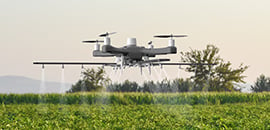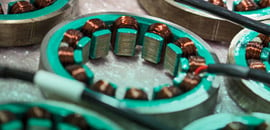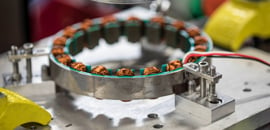Bandwidth
“Bandwidth” is often proceeded by the word “Servo”. “Servo Bandwidth” or “Bandwidth” describes the maximum frequency at which the control system will exert beneficial effort into a control system. Electrical engineers who deal with low pass filter types such as Butterworth, Elliptical, Chebyshev, etc., will often quote the -3 dB magnitude frequency as the filter’s bandwidth. The equivalent for servo systems would be the -3 dB point of the Closed Loop Transfer Function. This definition, however, is not universal. Many control engineers will refer to the 0 dB of the Open Loop (or Loop) Transfer Function as the Control System’s Bandwidth. This tech note will not dive into the details of each, rather, we want the reader to: a) be clear by what you mean when you use the word. Are you quoting the -3 dB point in the Closed Loop, or 0 dB in the Open Loop?; and b) ask what others mean when they use the word so there is no miscommunication that results in over-designing a control system, or having one not meet its intended performance.
In control textbooks bandwidth is described as a number that characterizes a system’s response time. BW = 0.35 * TR is the most commonly quoted formula, but is also the most commonly mis-used formula when describing closed loop mechanical systems. This formula is for 1st order systems, and closed loop motion control systems do not act like first order systems. Using the above formula can absolutely steer one in the wrong direction. There are many variations of the bandwidth formula that take into account the system’s damping ratio “zeta”. Zeta for a closed loop system is related to the phase margin of the system. The formula relating Phase Margin and zeta is discussed in the Phase Margin section later in this tech note.
It is important to note, however, almost all of the formulas you will find equating bandwidth and response time for second order systems are based on linear systems that are not in saturation. If one compares response times from actual step response data to the calculations made via bandwidth formulas, they will rarely be equivalent and the most likely reason is from voltage or current saturation. Drive systems have a limited amount of voltage or current, and if the step values chosen, in combination with the proportional and integral gain are too large, voltage or current saturation will occur, slowing down the system’s response versus the formula’s predicted response time.
Bandwidth is also frequently used incorrectly to state the control system’s ability to track, reject, or attenuate error. The most common misconception is that the higher the bandwidth the better the performance. For tracking, attenuating, or rejecting disturbances, “Loop Gain” is what matters, not Bandwidth. Loop Gain is frequency dependent. Two systems can have the same bandwidth, but very different low frequency gain. Both systems will have the same mathematically calculated response time, but one will track, or reject low frequency disturbances more so than the other.
Related to this concept is understanding the limitations of disturbance rejection (or tracking) as the frequency nears the bandwidth frequency. If we use the 0 dB cross over in the OLTF as our bandwidth frequency, this means that the Loop Gain just before the bandwidth is above 0 dB, but is also very small, say just a few dB. As stated above, Loop Gain is what drives disturbance rejection, and if Loop Gain is low, so is your disturbance rejection or tracking ability. This means is that one cannot expect the same performance at frequencies just before the bandwidth as compared to frequencies that are more than 2x lower than the bandwidth frequency. This is a key concept to understand when writing and responding to control system’s requirements.
















